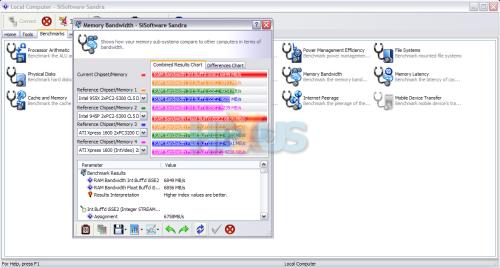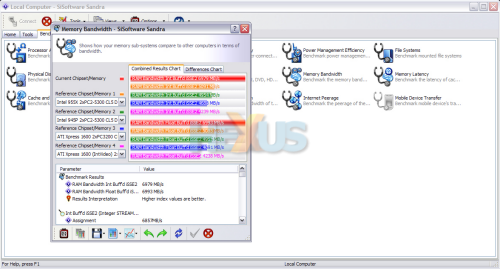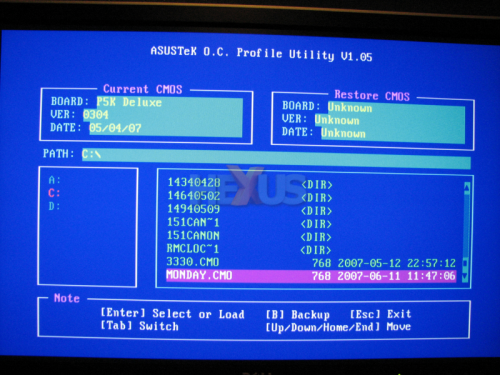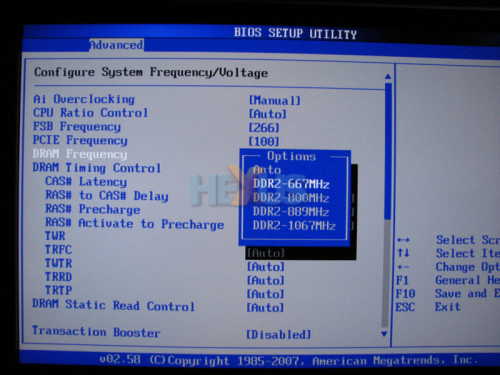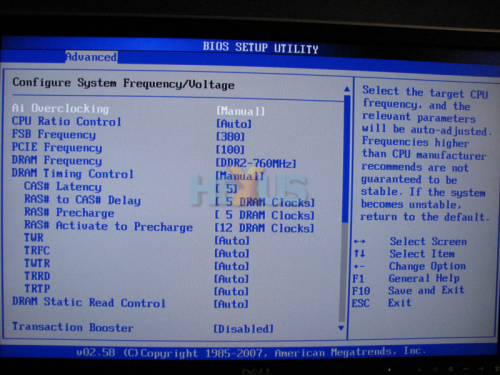Hold your breath
If the PC hangs or doesn't post, don't worry, it is just your
memory's way of telling you that it doesn't like going that fast, and
that it needs more voltage (see disclaimer) or looser timings.
If it boots to Windows, run the Sandra memory bandwidth benchmark and record your score again.
Run Orthos/Prime/SP2004 again. If you get errors, you know it's the RAM, so try upping the voltage by one notch.
Save and exit, boot to Windows and test again. Is it stable this time?
If
not, repeat the above steps and add another notch of voltage to the
RAM. However, if that doesn't do the trick, you can probably conclude
that your RAM doesn't overclock well and that the best strategy is to
leave it at stock timings/voltages, rather than damage it.
But,
if you're fortunate enough to find that the PC is stable, run the
Sandra 2008 memory bandwidth benchmark and record your scores.
Now, if you are feeling adventurous, you can try for even tighter timings, maybe something like 4-4-4-4, or 3-4-4-8.
Run Sandra again.
Keep a note of all your scores. If you do
have software that uses a lot of memory bandwidth, try out your new
settings on that as well.
At this point, it is just a case
of discovering your RAM's capabilities and deciding whether the
increased performance is worth the trade off in heat and voltage.
Once
you've found a set of stable timings that you like, save these BIOS
settings to disc for later use if your motherboard allows. Here we're
using the ASUSTeK O.C. Profile utility to do just that.
Next, let's see how high your RAM can go using a divider.
If
you haven't used a divider before on a C2D board, there isn't much to
it really. On Intel chipsets, the dividers only go upwards - only
letting you run the RAM faster than the CPU.
While we have a
play with these settings, it might be wise to put the FSB back to 266
for now - so that it's easier for us to explain what's going on.
At 266 FSB, we have a set of dividers available to us.
As you can see from the above screenshot, we have dividers to run the RAM at:
667MHz
800MHz
889MHz
1067MHz
So,
let's say that your RAM is rated at 800MHz, choose the 800MHz divider
(it can be any within reason) and make sure that your RAM timings and
voltages are set to their normal values.
Try upping the FSB
a bit to 300, this will now set the RAM to 720MHz, and we know that
your RAM can do at least 800MHz, so let's go up a bit more, trying 333
again.
This will give you bang on 800MHz on the RAM but only
3GHZ on the CPU, so we need to raise the FSB a bit more to say, 350.
That gives 840MHz on the RAM and 3150MHz on the CPU. It's not a huge
overclock but it is on the way.
Save, exit and boot to Windows exactly as before. If the PC
boots, that's a good sign. If it doesn't, you've gone too far, so
either back off the FSB or add a notch of voltage to the RAM (see
disclaimer).






